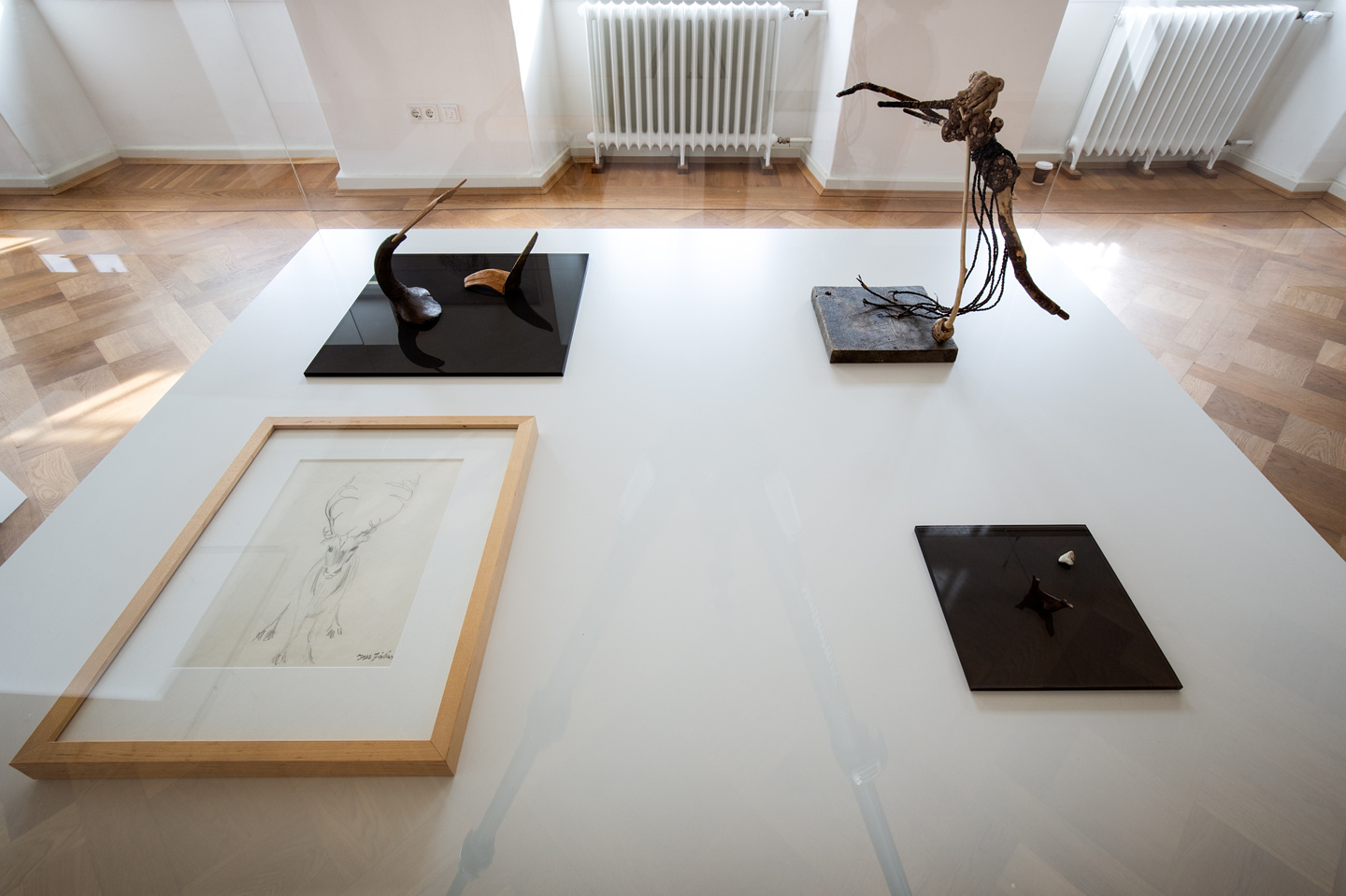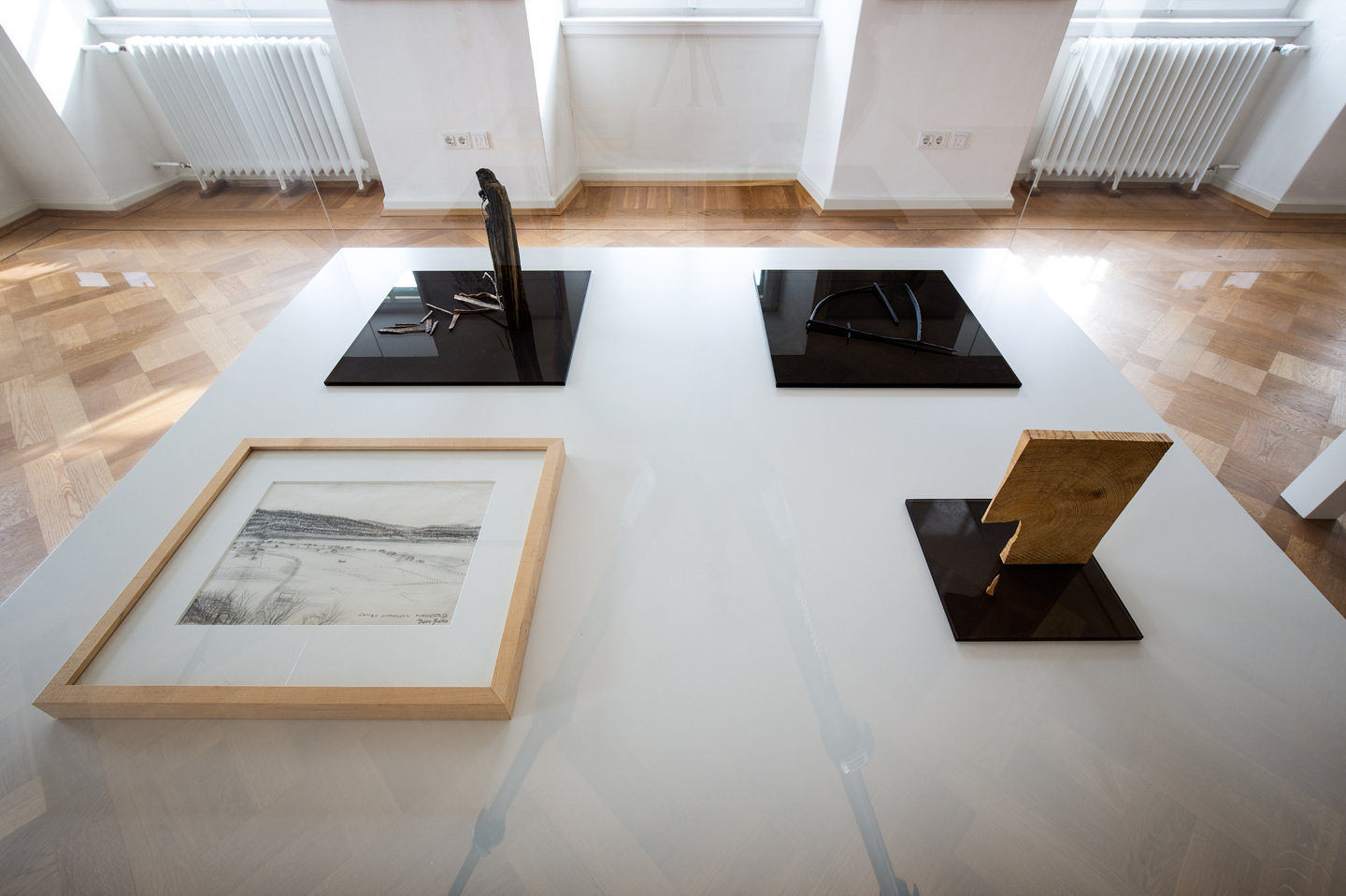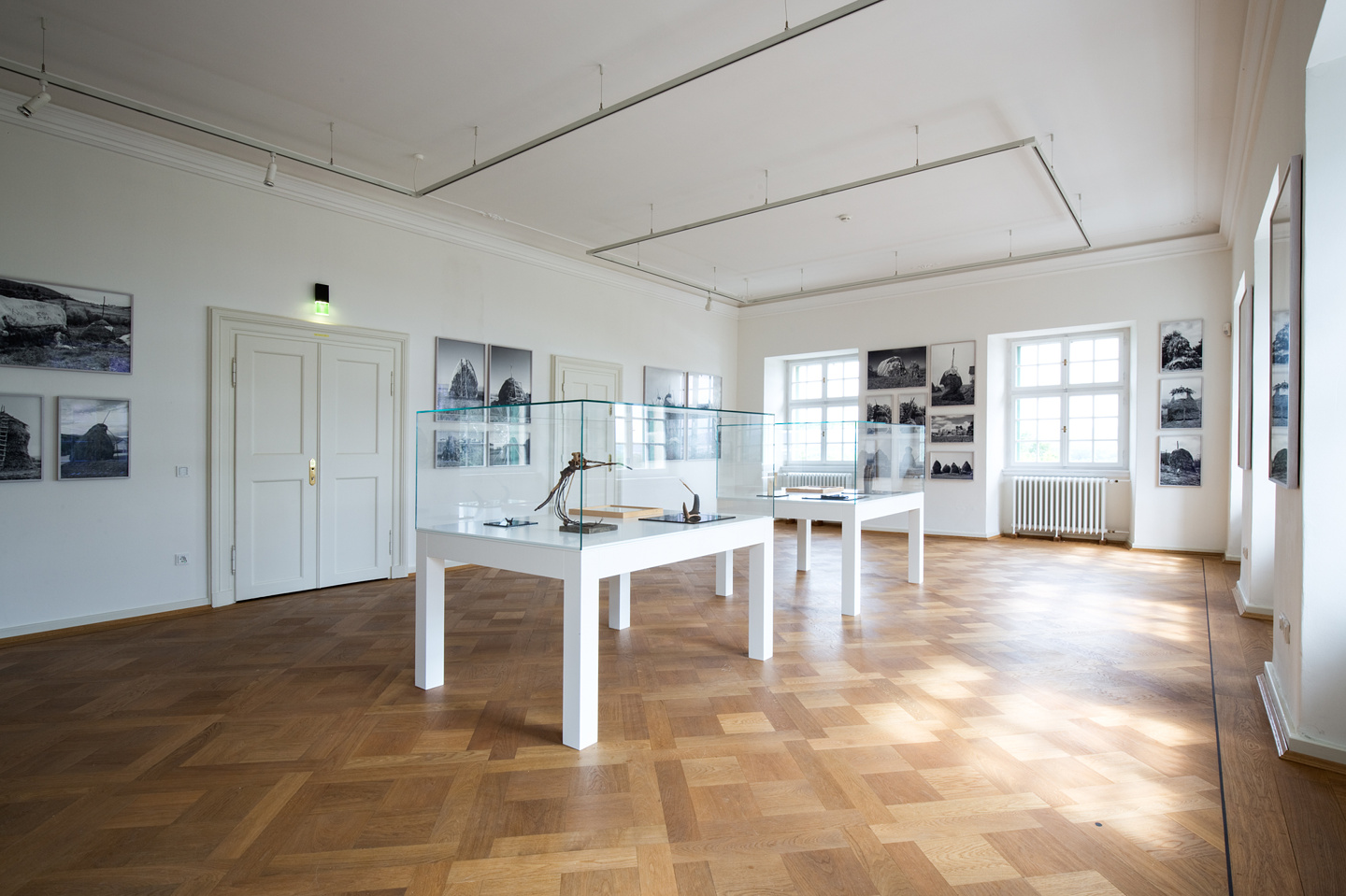
Iver Jåks, installation view, Palais Bellevue, Kassel, documenta 14, 2017, photo: Daniel Wimmer
When Iver Jåks first saw the light of day on a mountain near the village of Karasjok in Northern Norway in 1932, the Sámi did not have a word for “art.” Life, art, and craft were the same; the word duodji covered all creative activities. A good twenty years later, during his art education in Oslo, he was confronted with the official Norwegian art system. Jåks learned that “noble” high art should be separated from “ordinary” folk art. Meanwhile, back home in his own Sámi community, duodji was becoming more institutionalized and locked into narrower and narrower confines. But Jåks had a stroke of luck when he met his Danish wife, Inger Nielsen. Curious about Sámi culture, she had travelled to Karasjok to work and learn. When she met Jåks they immediately connected and embarked upon an artistic alliance that would last for the rest of their lives. In the mid 1950s, she took him to Copenhagen, where she introduced him to the independent, experimental avant-garde art scene. That experience liberated his mind and enabled him to exceed any constraints of genre.
Jåks once told me that reindeer antlers revealed stories to him and activated his emotions. A small piece of touchwood did the same. As a highly qualified duojár (person working with duodji), Jåks worked to unleash the inner qualities of the materials. He tried to display what he called their potentials, their “souls,” by adjusting the form to the material, not the other way around. His works preserve many of the forms created and processes experienced in nature and thus they represent something far removed from busy urban life; something I experience as spirituality. At play in these works is a compressed vitality that at the same time is dangerously threatened by decay.

Iver Jåks, installation view, Palais Bellevue, Kassel, documenta 14, 2017, photo: Daniel Wimmer
Today, when we come upon a sculpture by Jåks, we are offered the unique experience of at once beholding a work of art and observing its deterioration. With each passing decade, his three-dimensional works are under constant transformation. Materials like pine, reindeer horns, brass, tanned pelt, walrus tusks, roots, burl, silver, ivory, and rope—arranged as if effortlessly and by chance—and with the fewest interventions possible, will gradually disintegrate until nothing remains. They are destined to perish, just like you and me, into oblivion.
After his passing in 2007, Jåks’s legacy represents enormous challenges for younger artists inspired by him. Few if any have succeeded in combining the disparate worlds of duodji and contemporary art the way he did. Jåks was, however, not interested in the terminologies of “Western” art. There were no words for sculpture or installation in his mother tongue. He focused on the transitional, changing, dynamic or processual, and thus succeeded bringing the ancient, holistic worldviews of the Sámi into the future.
—Irene Snarby is a PhD Research Scholar in Art History in the Sámi Art Research Project (SARP) at UiT The Arctic University of Norway.

Iver Jåks, installation view, Palais Bellevue, Kassel, documenta 14, 2017, photo: Daniel Wimmer
